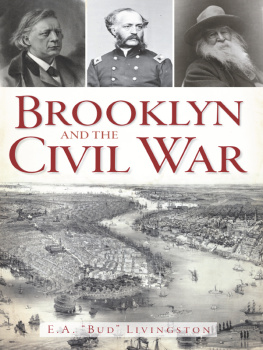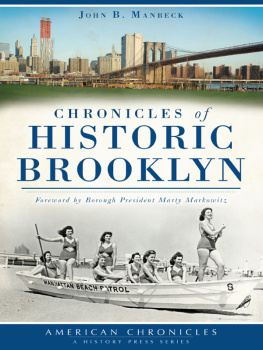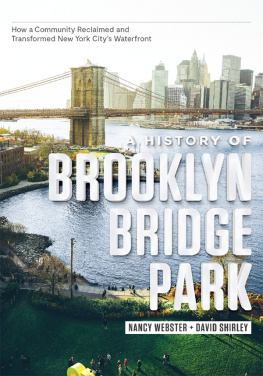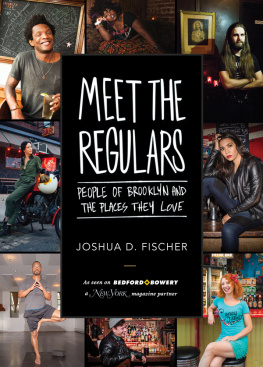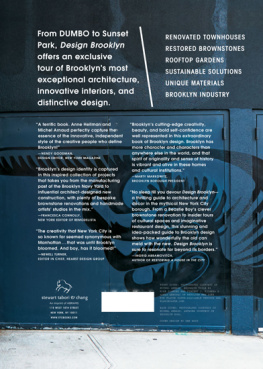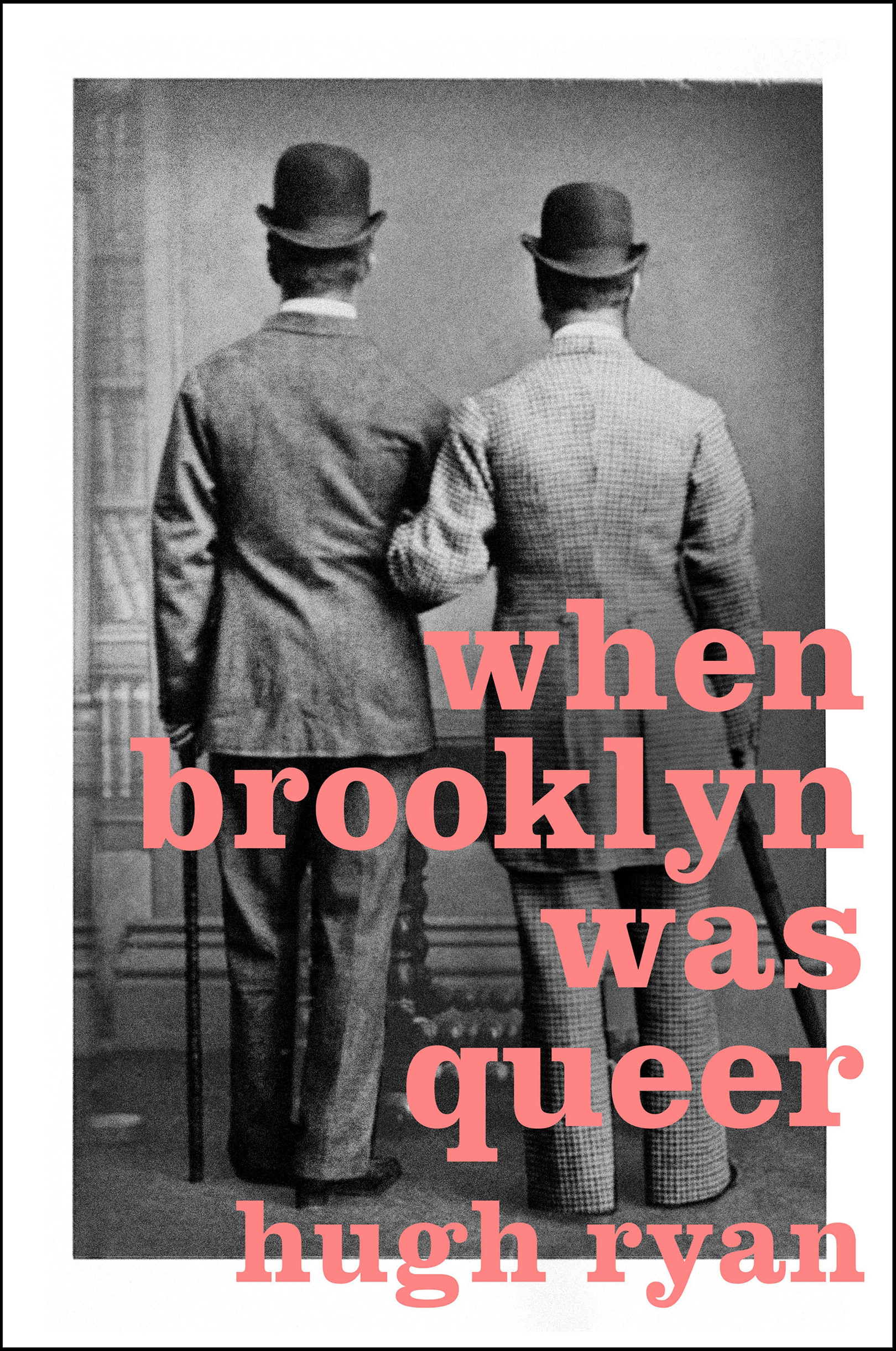Arm in arm with Gypsy Rose Lee, Carson McCullers bursts out of the door of 7 Middagh Street and into the cool, sweet, smoky night. Somewhere nearby, a ship is coming into harbor, and its horn spills long, low notes that reverberate through the narrow blocks of Brooklyn Heights. Somewhere nearby, drunken sailors are laughing, sneaking out of the Navy Yard perhaps, or returning home from a days leave spent whooping and wooing on the roller coasters at Coney Island. Somewhere nearby are some 2.7 million peoplethe teeming mass of Brooklyn; Brooklyn the Great, second city of the Empire, as some call it.
Anywhere else in the world, the two women would make an odd pair: the statuesque burlesque queen, and the gangly literary genius. Some say Carson dresses like a man; some say Gypsy secretly is one. They couldnt give a fig. In Brooklyn, they are best of friends, sisters in search of adventure, unable to resist the siren call of a fire alarm sounding, even though its Thanksgiving and their house is filled with some of the most famous artists in the world, from the poet W. H. Auden to a good portion of the corps of the Russian ballet.
The two dont make it far from home before McCullers stops dead, smacked by a sudden revelation: she has figured out the central crux of her next book, the story that has been nagging at her all fall, which will soon become the novel The Member of the Wedding. She stops in the street, laughing, as Gypsy runs back to her, grabs her hand, and pulls her forward. This is the perfect moment; the perfect place; McCullers is the most perfect version of herself she will ever be. Their future is illimitable.
Except that in a year, they will both be gone from Brooklyn. In five, the very house they lived inalong with a good chunk of the blockwill be destroyed. And in ten, Brooklyn itself will begin to shrink, collapsing inward after 150 years of unparalleled prosperity. The two women stand on a precipice, one that has nothing to do with the coming World War. Brooklyn as they know itqueer Brooklynis already under attack.
But tonight, there is a fire to be found, a party to return to, sherry to drink, and stories to tell. There is life to be lived. Brooklyn is waiting.
Arm in arm, they run.
In 1969the year of the Stonewall Riots in New York CityMartin Boyce was just twenty-one years old, part of a pack of young, loud, unapologetic queens who hung out at the Stonewall Inn. The surrounding streets of the West Village were their stomping ground, the one area of the city they could lay claim to. Today, nearly a half century later, Boyce is telling me about those days as we sip cappuccinos and watch those same streets teem with affluent locals out for a walk on the first nice day of spring.
The late sixties was the last hurrah of the turf situation in New York City, he says, his fluting voice now gravelly with age. And it turned out that Christopher Street was our turf. We didnt even know until the riot occurred and we had to defend it.
Boyce is voluble and sweet, making his tales of assaults, arrests, and constant, casual harassment all the harder to hear. For every block he recalls another beating, for every neighborhood another gang. He tells me how queers learned to survive, and how that hard-won knowledge, which was literally beaten into his bones, made the Stonewall Riots possible.
Anywhere youd go, youd have to be ready, he recalls with a sigh. I was attacked in the Bronx, attacked in Brooklyn. Go to the movies? Youd be attacked. But whatever happened, wed manage to meet up again, right in the vicinity and safe. That made us excellent urban guerrillas, because we knew how to break and reform. That kept the Stonewall Riots going for hours.
Days, actually. From June 28 to July 1, 1969, some of the most marginalized people in the countrythe homeless, poor, sex workers, drug addicts, people of color, homos, dykes, queers, and queensbecame an irrepressible force, fighting back against the routine police harassment they experienced. In that moment, they realized the Village was theirs.
Nobody was against us, thats for certain, even if they werent joining us. Boyce talks with his hands, driving the point home. You could see it in their eyes: I cant do this, but do it for me. And all the straight people that were trapped in it were guided out. Because it wasnt against straight people. It was against the police.
For nights on end, Boyce and his friends led the cops on a merry chase, smashing windows, throwing bricks, and rewriting the history of the world. Boyce tells me they knew it, all of them, almost instantly. Afterward, it was in the air. Something had changed.
I remember going down the street, maybe four or five days after, he tells me. I was loud, so they could tell what I was. And there was a sanitation man throwing bags into the back of the truck. He saw me, and he raised his fist in the power salute.
Boyce pauses for a moment, nodding emphatically to himself, looking at his hand unconsciously curled into a tight fistmemory made flesh. Around us, the clatter of cups and spoons, laptops and ringtones, fades away. I can feel him drifting backward in time, and when he speaks again, his voice is strained and quiet.
Because a lot of peoplethe ones that were fair in their hearts and minds!knew that we were really oppressed. To see that man like that
For a while I think Boyce is done talking, overwhelmed by the memory. The seconds tick down on my digital recorder. Then suddenly he smirks, showing his teeth. It was amazing.
These days, Boyce would remind you of nothing so much as a sweet gay Santa, but back then, he was a scare queen, which meant he wore just enough makeup to freak out the straights. From California to New York (and everywhere in between) it was people such as Boycethose who couldnt or wouldnt hide; the ones black feminist scholar Alexis Pauline Gumbs calls the never straightwho acted as the foot soldiers of the gay revolution. Forever after, those three days in the summer of 69 have been cited as the birth of the modern gay, lesbian, bisexual, and transgender rights movement.
But Im interested in what came before. If Stonewall represents the start of the modern gay movement, who (and where) were we before? Before Stonewall, before gay rights, before the word gay even meant anything other than happy? And my eyes are set a few miles to the east. The island of Manhattan has always been one showy queen, her skyscrapers of sexual visibility casting long dark shadows over the benighted outer boroughs. The intertwined stories of three neighborhoodsGreenwich Village, Chelsea, and Harlemhave come to stand in for the queer history of the city as a whole. But for the last six years, Ive been talking to folks such as Boyce, asking them one big question:



